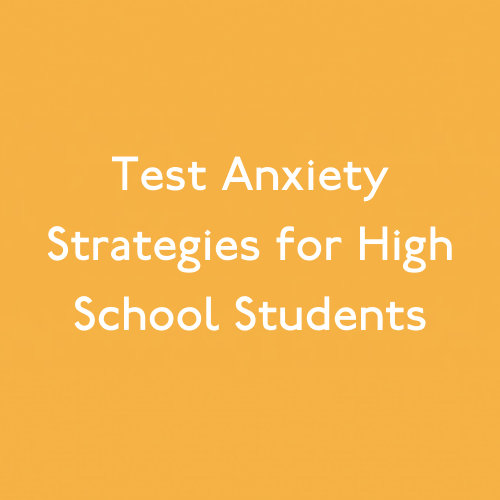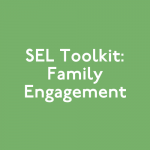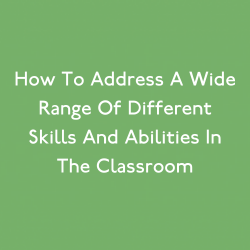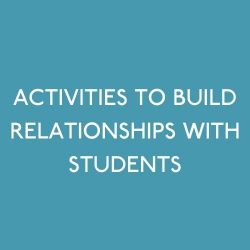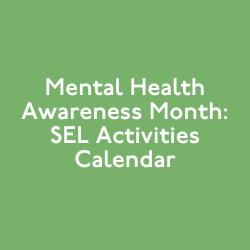Test anxiety has often been compared to performance anxiety and can lead to negative behavior in the classroom and students making irresponsible decisions to either relieve stress or increase their performance during testing and exams. Anxiety looks differently in students, so how one student indicates they are feeling test anxiety may differ greatly from another student. It’s important that teachers know their students and understand their behaviors and feelings about learning or testing so they can better identify when high school students need support with test anxiety.
For high school students, testing may have long-term implications for educational opportunities, so student behavior may indicate feelings like nervousness, stress, panic, or feeling overwhelmed. Students may seem tired or overly hyper depending on how they individually respond to stress. Some students may break down in tears while others distance themselves from friends to spend more time in the library studying. From the first day of school, high school teachers should aim to understand how their students demonstrate and respond to stress in order to best support students during testing season. Some students, like students who receive special education services, may have their test anxiety better understood because it’s documented in an IEP and communicated to teachers. However, all students experience some kind of feeling when it comes to testing, and students may need more support than teachers anticipate.
Causes of Anxiety in High School Students
High school students are already dealing with a number of potential stressors before testing season comes around. The transition from middle school to high school and then from high school to life after K-12 education can be challenging for students to navigate. On top of classes, extracurriculars, and changing social situations, high schoolers are making decisions and setting goals for their futures. The sudden reality of new responsibilities and approaching adulthood can weigh on their minds. And testing may be a critical step in determining their options after high school. For many students, tests can feel like the gatekeeper to the future they’ve been planning and preparing for. No matter how academically successful a student has been, that can feel like a lot of pressure.
For other students, tests may mean the difference between graduating high school and repeating another year. The sheer idea of not being able to graduate with your peers may be enough to overwhelm students, especially students who have already had a more challenging academic career. Students may start to shut down long before testing season approaches, mentally checking out to avoid what may feel like an inevitable failure further down the road. Students may be late or absent more frequently, have more disciplinary incidents, and may seem to lose interest in school entirely. An insightful teacher who has a strong relationship with students and understands their educational history should be able to analyze these behaviors and recognize the relationship to testing anxiety, even months before high-stakes tests.
And if that weren’t complicated enough, high schoolers often desire the independence to work through things on their own, even if they don’t always have all the tools to make practical choices. Students may not turn to a trusted adult for support – they may not even demonstrate behaviors that indicate stress. But that doesn’t mean they aren’t experiencing test anxiety.
Test Anxiety Strategies: How to De-Stress Before a Test
When it comes to how to destress before a test, teachers can help students prepare for testing anxiety in the months, days, and hours before a test – and even during a test!
One of the best ways to reduce testing anxiety is to ensure students are not surprised on the day of the test. School-wide initiatives like trial test days, where the entire school operates as it will during a high-stakes test day, helps students walk through the motions so they know what to expect on testing day. Small changes like finding your testing room in the morning, managing bathroom breaks, and experiencing the flow of teacher proctors throughout a test can be anxiety drivers for students who already experience testing anxiety. A “run through” of the day can help students feel more prepared in terms of what to expect on testing day.
Students should also have opportunities to experience the test format and be familiar with the test well beforehand. Incorporating questions from previous years into the curriculum and exposing students to everything from test content to test format throughout the year can ensure that there are no surprises on test day. Students may not know what the test will contain, but they can know the format, flow, expectations, and have a familiarity with the test overall.
In the days leading up to the test, teachers can design a lot of opportunities for small wins to build students’ confidence. It’s often our instinct to focus on the “problem” areas or the skills and content that students are struggling with the most so students have ample time to practice, however it’s important that students also remember and practice the skills they do well. Building small wins into the days leading up to the test can help build student confidence, which can be the difference in mindset on test day. School-wide initiatives to build confidence can also be helpful. Activities that help students feel connected to a larger community and reminded of their support network can lead to more confidence on test day.
On test days, mindfulness strategies can support students throughout testing. Invite students to stretch before the test begins. Lead a breathing exercise. Teach students strategies they can use independently throughout the test. SEL resources for teachers should include quick, simple, and easy-to-implement mindfulness strategies that teachers can incorporate into the testing season. Ensure students have access to water, snacks, and bathroom breaks as needed. And of course, sometimes it’s the face of a familiar teacher at the door giving a thumbs up that makes all the difference.
The Nation’s Leading SEL Company
Move This World is the leading provider of social emotional learning (SEL) multimedia experiences for students, teachers, and families. Our SEL programs are customized for PreK-12 students and are delivered through short interactive lessons with the goal of empowering students to navigate the rapidly-changing realities of their world – both in the classroom and throughout their lives. The impactful yet simple Move This World SEL curriculum allows educators and families to incorporate Social Emotional Learning into their schedules every day, without planning or prep.
Contact us to learn more about SEL Grants and bringing Social Emotional Learning to your classroom.
Related links:
